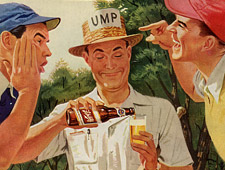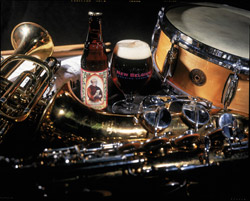Ah, yes, the Dark Side.
Hugh Sisson of Clipper City writes in his blog about positive parallels between the craft beer and small winery industries, but also suggests “there are some developments that have taken place in the boutique wine industry that do not, in my opinion, bode well long term for craft beer. Should the craft beer industry follow the wine industry in these areas, I believe we could see some problems down the road.”
Thus the Dark Side.
First and foremost, consolidation in production. Many of the more successful California wine properties have over the years gone from being founder owned and operated to part of much larger corporate entities. This certainly improves marketing efficiency as well as developmental working capital and potential economies of scale in purchasing of some commodities. And with the wine industry, this potentially can work – principally because the “boutique” wine industry is tied to the land, and as long as the managing entity respects the unique character of the property, quality is usually maintained or actually improved upon. There doesn’t necessarily seem to be a problem with XYZ Corporation producing 15 different chardonnays from 15 different microclimates under 15 different labels – the products really are different – and the differences are seen as a “strength” and a marketing positive.
But I am not sure the same kind of approach would be successful for craft beer.
I’m certain it would be bad.
And there are those in the wine community who would be glad to tell us what’s wrong with consolidation, and that nuance is disappearing from everyday (reasonably priced) wines.
Todd Wernstrom of Wine News last year wrote that beers that capture the essence of what once made wine special had become more common than such wines.
Pointing to beers from “micro-size” breweries he wrote:
– They are unique.
– The embrace their terroir – which he defined as a function not of where beer is made but of the choices made by the brewmaster.
– They convey their sincerity and genuineness in their marketing efforts.
Sisson is spot on when he writes “a major factor in the success of craft beer is the broad range of personalities in the industry and the way they interact and enhance one another.”
Losing that range would land us smack on the Dark Side.
Added Sept. 6: There are paths that wine has gone down we know beer shouldn’t, such as beer as an investment. Last night I read The New Yorker’s story about The Jefferson Bottles (it’s a long puppy online, and there’s lots of other good reading in the issue so you might want to grab the actual magazine). It’s an intriguing look into a world where people pay crazy amounts for bottles they’ll never open, have cellars with thousands of wines, and try to overlook the fact that many are likely fakes. Scary, quite scary.
 And the latest advertising for Miller Lite introduces something called the
And the latest advertising for Miller Lite introduces something called the  What do jazz musicians drink?
What do jazz musicians drink? Yesterday I wrote: “and I’m sure that news stories and tributes will appear soon enough elsewhere on the Internet.”
Yesterday I wrote: “and I’m sure that news stories and tributes will appear soon enough elsewhere on the Internet.”